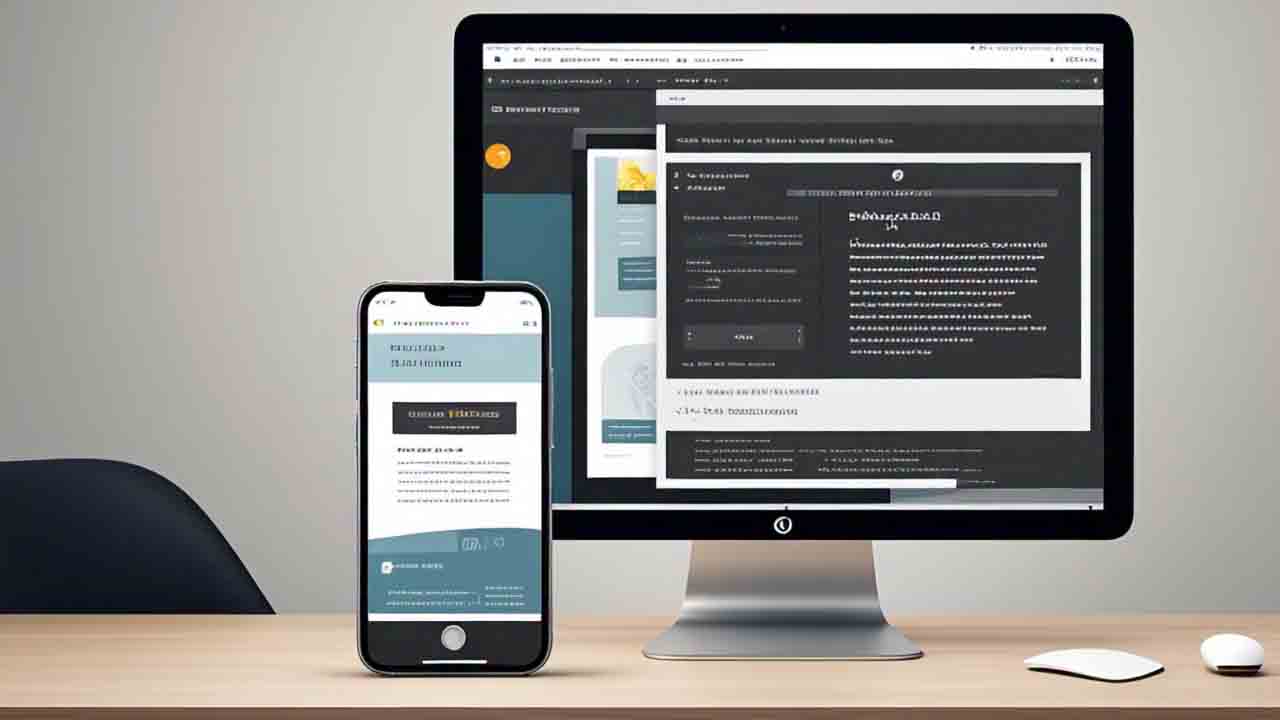
Fastcreasite – Next-level responsive design is the future of web design, allowing websites to adapt smoothly to various screen sizes and devices. As mobile usage continues to grow, providing a seamless and consistent user experience across smartphones, tablets, and desktops has become a top priority. The evolution of responsive design focuses not only on fitting content to different screens but also on ensuring that users receive a smooth, uninterrupted experience regardless of the device they use. Here’s how next-level responsive design is shaping the future of user interactions.
Next-level responsive design goes beyond traditional methods of adjusting layout and content based on device size. It now emphasizes user experience (UX) across every interaction. The key is fluidity and consistency. With mobile devices accounting for a large portion of web traffic. Designers must ensure that mobile and desktop users receive an equally high-quality experience. This includes adjusting the layout for easy navigation, optimizing load times, and maintaining readability and accessibility no matter what device is used. The goal is to create a user-friendly interface that doesn’t compromise on design aesthetics. Whether the user is browsing on a smartphone, tablet, or desktop.
“TikTok Trends: How K-pop Challenges Go Viral”
In today’s digital landscape, mobile-first design is more important than ever. With a significant rise in mobile web traffic, designers are prioritizing mobile user experiences over traditional desktop-first designs. Next-level responsive design adopts the mobile-first approach by ensuring websites are fully optimized for smartphones and then expanding the layout for larger devices. This means streamlining content for quick loading times and reducing unnecessary elements that could slow down performance on smaller screens. By focusing on mobile optimization, websites can provide users with a faster, more intuitive browsing experience, regardless of device.
Next-level responsive design incorporates dynamic content that adjusts not only in terms of layout but also in terms of visuals. Advanced CSS media queries and JavaScript techniques enable designers to tailor images, text, and other elements based on the device’s capabilities. This ensures that content is appropriately sized and displayed, which improves both load times and user experience. Media queries allow designers to define how different elements behave depending on the screen resolution. Enabling more precise control over the user interface. Adjusting the size of an image or changing the way a button displays both require attention to detail. These features ensure that every user interaction is smooth. Regardless of device.
Next-level responsive design is about creating a seamless, intuitive experience that adapts to users’ devices and needs. As mobile usage continues to rise, responsive design will continue to evolve. Focusing on efficiency, accessibility, and a polished UX across every device. The goal is to deliver a consistent and enjoyable experience for all users. Ensuring websites and applications meet the demands of a diverse and ever-changing digital landscape.
“A Solution for Insomnia: The Power of CBT-I”
Fastcreasite - In the fast-evolving world of web development, accelerating web performance has become a top priority for developers and…
Fastcreasite - Micro animations are subtle animations integrated into websites and apps that provide immediate visual feedback for user actions.…
Fastcreasite - In the rapidly evolving world of web development, edge computing is becoming a crucial technology, especially in improving…
Fastcreasite - Revolutionizing shopping, live streaming has emerged as a game-changing tool that brands are leveraging to connect with consumers…
Fastcreasite - A new era in SEO has dawned as user behavior evolves towards seeking faster, more direct answers. This…
Fastcreasite - Unlocking Trends in today’s fast-paced digital world is crucial for marketers, content creators, and businesses alike. Discovering what…